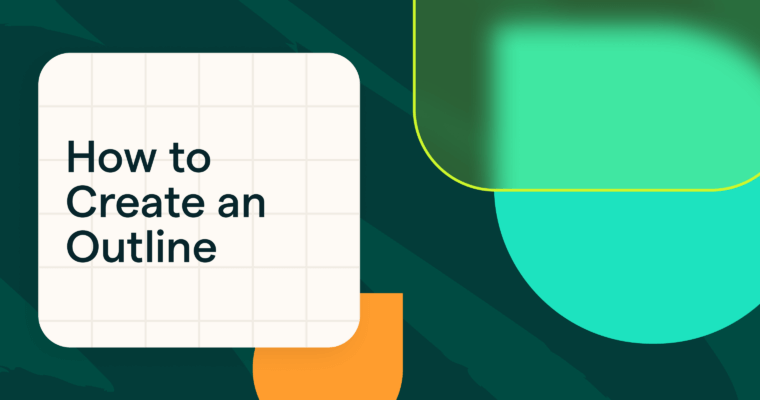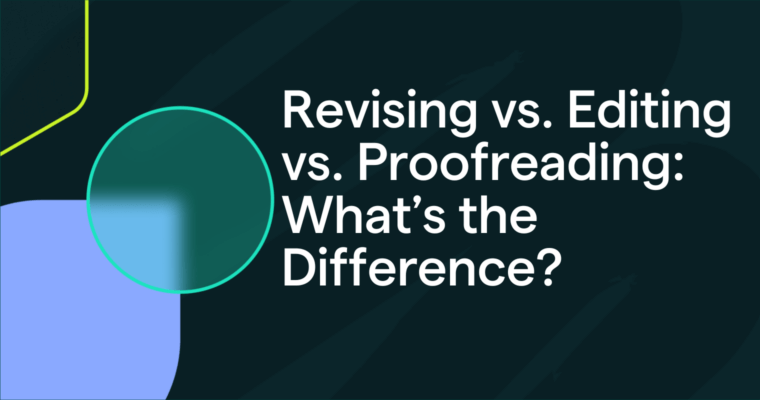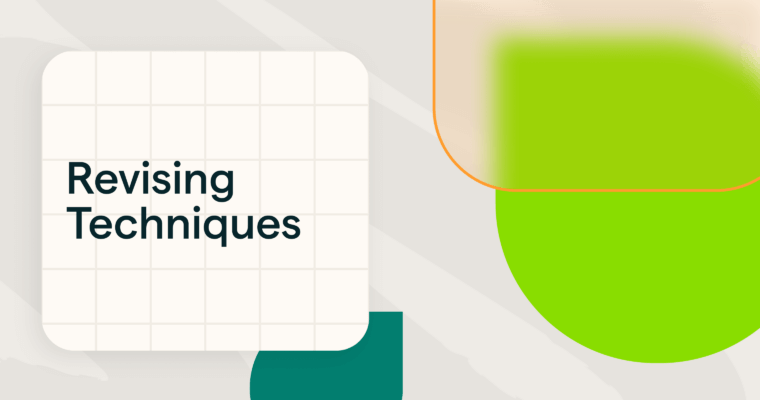
Feeling overwhelmed by a jumble of ideas? An outline is your roadmap. It turns scattered thoughts into a clear, structured plan. Instead of jumping straight into drafting, outlining helps you organize your content, stay on track, and write with purpose.
Whether you’re crafting an essay, a blog post, or a research paper, a solid outline helps you organize your thoughts and write with confidence. In this article, we’ll break down six simple steps to building an outline that works so you can spend less time stressing and more time writing.
Table of contents
Before you start: Set yourself up for success
How to write an outline in six steps
Step 1: Define your central idea
Step 2: Map out major sections
Step 3: Choose the right structure
Step 4: Add supporting evidence
Step 5: Check for logical flow
Before you start: Set yourself up for success
A strong outline starts with solid preparation. Taking a few key steps beforehand makes the outlining process faster, smoother, and more effective. Here’s how to get ready:
- Know your purpose: Are you informing, persuading, or telling a story? Clarifying your goal helps determine the structure, tone, and flow of your piece.
- Generate ideas: Use brainstorming methods like mind maps, bullet lists, or freewriting to explore your thoughts and uncover key points you want to include.
- Do your research: For complex or unfamiliar topics, gathering facts, examples, and sources early saves time and strengthens your argument.
- Group related ideas: Look for patterns or themes in your brainstormed content. These clusters naturally form the main sections of your outline.
Once you’ve laid this groundwork, you’ll be ready to start outlining with clarity and confidence.
How to write an outline in six steps
The journey from scattered thoughts to polished content begins with a well-crafted outline. Here’s how to build one that will serve as your roadmap to successful writing.
Step 1: Define your central idea
Clarify your purpose and shape it into one clear, compelling statement. Think of this as your North Star. It might be a thesis statement in academic writing, a central argument in persuasive content, or a thematic focus in creative work. Keep it specific enough to guide your writing yet flexible enough for thoughtful development.
Step 2: Map out major sections
Take your initial idea clusters and group them into major sections—these form the backbone of your piece.
Most outlines follow a basic three-part structure:
- Introduction: Presents your main idea or thesis and sets reader expectations
- Body: Contains your supporting points, evidence, and main arguments
- Conclusion: Summarizes your main ideas and reinforces your central point
Here’s how a simple outline using this three-part structure might look for a piece about the benefits of daily exercise:
- Introduction
- Briefly introduce the topic
- State thesis: “Regular exercise significantly improves physical and mental health.”
- Body
- Section 1: Physical benefits
- Heart health
- Strength and endurance
- Section 2: Mental health benefits
- Stress reduction
- Improved sleep
- Section 1: Physical benefits
- Conclusion
- Recap main points
- Reinforce thesis with a call to action
Step 3: Choose the right structure
Now that you’ve identified your main sections, choose the outline format that best suits your needs:
- Formal outlines use structured systems like alphanumeric (I, A, 1, a) or decimal (1.0, 1.1). This system is great for research papers or complex documents.
- Informal outlines are free-form—bullet points, lists, or mind maps. This approach is ideal for blog posts, creative writing, or early-stage planning.
Clearly indicate hierarchy through indentation or numbering for easy readability.
Step 4: Add supporting evidence
Now, it’s time to flesh out your sections. Under each major heading, add the key points, examples, facts, or arguments that support and develop your central idea.
What this looks like depends on the type of writing:
- Persuasive or academic writing: Research citations, expert quotes, statistics
- Creative writing: Plot points, character development, emotional turning points
- Informative writing: Definitions, explanations, real-world examples
Laying this groundwork early helps you write more smoothly and spot any weak areas before you dive into your draft.
Step 5: Check for logical flow
Step back and review your structure. Does each section connect smoothly to the next? Is the progression clear and intentional?
Depending on your topic, you might use a structure like:
- Chronological order
- Problem-solution
- Compare and contrast
Step 6: Refine and revise
Your outline isn’t set in stone—it should grow with your understanding of the topic.
As you write, keep revisiting it. You might:
- Reorder sections for better flow
- Add new insights or supporting points
- Trim or tighten areas that feel cluttered
If your outline gets too detailed or feels stuck, it might be time to start drafting. Your outline should be thorough enough to guide your first draft yet flexible enough to adjust as ideas develop.
Think of your outline as a living document—it keeps your writing grounded while allowing ideas to evolve.
Tips for effective outlining
Want to get even more out of your outline? These practical tips can help you stay focused, organized, and creative:
- Keep it clear and consistent. Use parallel structure and consistent formatting so your outline is easy to read—and even easier to follow.
- Start big, then zoom in. Focus on your main idea and major sections first, then layer in supporting details. Avoid overfilling your outline before you’ve nailed down the bigger picture.
- Stay flexible. Don’t treat your outline as fixed. It should evolve as your ideas sharpen and shift.
- Try visual tools. Mind maps, sticky notes, or digital whiteboards can help you see connections and rearrange ideas spatially when linear outlining gets stuck.
- Use your outline as a guide, not a rule book. Let it clarify your thinking—but leave room for creativity, discovery, and adjustment as you write.
Common mistakes to avoid
Outlining is meant to make writing easier, but it can do the opposite if you’re not careful.
- Skip the outline entirely? You’ll likely end up with a messy, disorganized draft.
- Make it too rigid? You risk boxing yourself in and missing creative breakthroughs.
- Misalign it with your purpose? Your final piece may feel scattered or unclear.
The key is balance. Build a strong, flexible framework that keeps your ideas organized and leaves room for discovery. A good outline should support your message, not stifle it.
Conclusion
A strong outline is the foundation of great writing. It gives your ideas structure, keeps you focused, and makes the drafting process less overwhelming. Outlining helps you spot gaps, avoid tangents, and ensure your message comes through clearly.
The best part? Outlines aren’t set in stone—you can adjust and refine them as your ideas evolve. So, the next time you face a blank page, start with an outline. Your future self will thank you!
How to write an outline FAQs
What is the format for an outline?
Outlines typically fall into two main categories:
- Formal outlines are structured and detailed, using systems like alphanumeric (I, A, 1), decimal (1.0, 1.1), or full-sentence formats. These are ideal for academic or complex writing.
- Informal outlines are more flexible—think bullet points, topic outlines, mind maps, or reverse outlines. They’re great for brainstorming and early-stage planning.
What are the three main parts of an outline?
An outline is typically structured into three main parts:
- Introduction: Sets the stage by presenting your main idea or thesis Body: The heart of your piece, where you develop key points and supporting evidence
- Conclusion: Wraps things up by summarizing key takeaways and reinforcing your main message
How detailed should an outline be?
That depends on your topic and writing style. Outlines can be broad or highly detailed:
- High-level outlines focus on major sections and ideas. They’re useful for quick planning or shorter content like blog posts or short essays.
- Detailed outlines include subpoints, examples, sources, and notes. These are best for complex topics, research papers, or long-form content.
Can an outline be adjusted while writing?
Absolutely. An outline is a flexible guide and is not meant to be a set-in-stone plan. As you write, you might uncover new insights, find a better structure, or bring in new evidence. Revisiting and revising your outline helps your ideas stay sharp and your writing stay focused.






